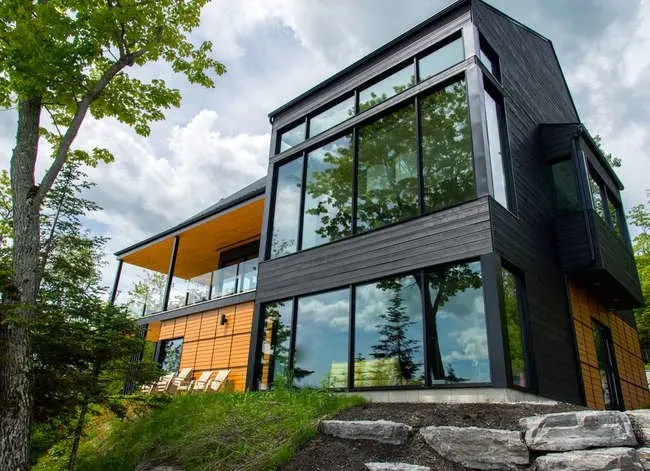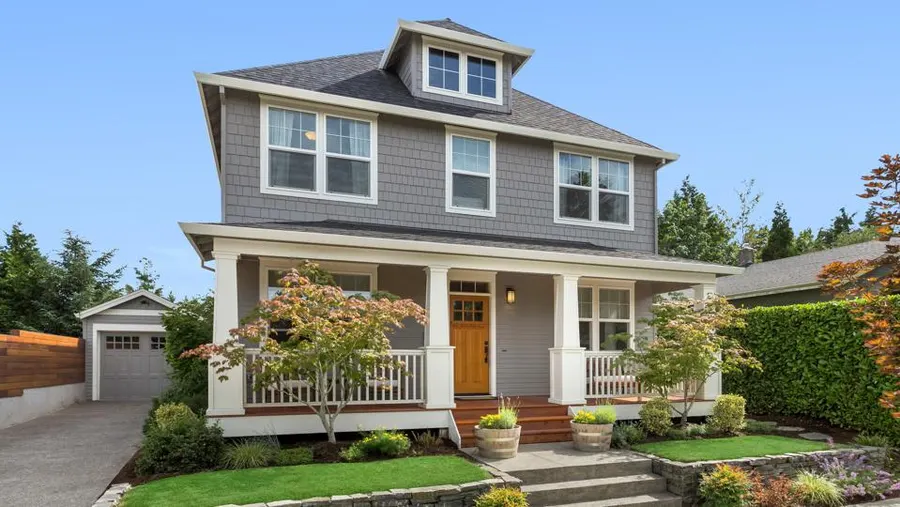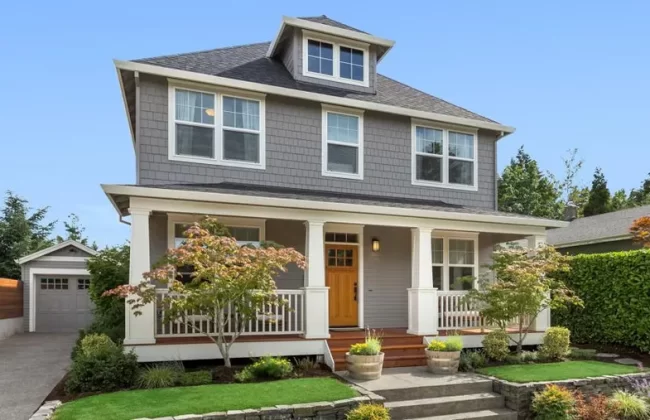A study by Today’s Homeowner found that 55% of respondents had done at least one type of renovation on their homes in the previous year. In contrast, other surveys found that half of homeowners are planning to renovate their current homes or move.
There are multiple reasons why a person might choose to renovate their home instead of moving to a more suitable property. One compelling reason is the current economic climate, with rising interest rates and stricter lending criteria making renovating more affordable than moving. This financial prudence can be a significant motivation for updates. Other motivations include:
- A desire to modernize the home.
- A love for the area they live in.
- A wish to increase property value and improve their quality of life.
Renovation plans can vary widely, from smaller tasks like a bathroom remodel to more extensive changes such as increasing living space, adding an extra floor, or even rebuilding the property from the ground up. However, it’s crucial to remember that the key to a successful renovation project is not just the work itself but also understanding why you’re doing it in the first place. This understanding will make you feel informed and prepared for the journey ahead, ensuring homeowners feel confident and ready for their renovation project.
If you’re renovating to add value, the scope of the work and finish might need to be to a much higher standard than if you’re renovating it for your enjoyment only. If you have no plans to move in the immediate future, saving money by not splashing out on high-end luxury aspects of finishes can save you money elsewhere without compromising on quality.
The aim is to add something to the home, be it to increase its quality of life, value, or habitability. This potential increase in property value can make homeowners feel optimistic and motivated, knowing that their investment can pay off in the future.
With this in mind, this post will look at some of the more popular areas of the home that people renovate and the ones that can make your life easier and increase value.
Bathroom Remodel

In 2022, 27% of people carrying out home renovations did so in their bathrooms. A well-appointed and thought-out bathroom remodel or addition, if you have the space to add an extra bathroom, can drastically increase the value of your home; this can be, on average, anywhere from $20,000 to $50,000 depending on the level of work carried out, the property size, market trends, and your area as well as the buyer wants. Not only that, but it can also give you that much-needed additional space for family members to be ready in peace and comfort. Buyers typically consider kitchens and bathrooms a priority when viewing homes, so if you want to increase resale value. Bathroom Remodeling is a great option. Current trends include bright white bathrooms, wet rooms, and freestanding tubs.
Kitchen
The kitchen is one of the leading renovation projects undertaken year after year. With most families spending the majority of their time here, it’s little wonder they choose to invest in this area when the time comes for renovations.
Older-style homes and kitchens weren’t made for modern living; kitchen renovations can change a home’s look and feel, not to mention the value, as buyers are often willing to pay more for a well-designed kitchen space that complements the style and flow of the home and really allows you to make the kitchen the heart of the home.
Depending on your needs and budget, your kitchen remodel can be as minor or extensive as you wish. Lower-end changes or minor adjustments, such as new cabinets, can be cost-effective and improve the kitchen’s aesthetics, while more extensive work, such as a full change, newer, integrated appliances, layout change, or even including an extension to create a seamless indoor-outdoor living space, can massively increase the value of the property, allowing you a more significant Return on Investment (ROI) upon selling.
ROI is a measure of the profitability of an investment. In the context of home renovation, it refers to the additional value your renovation adds to your home compared to the cost of the renovation. For example, if you spend $ 10,000 on a kitchen remodel and it increases your home’s value by $ 20,000, your ROI is 100%.
Energy Efficiency Upgrades

Another important aspect of your home is the energy it uses, and making investments in improving the energy efficiency of your home can allow you a more comfortable way of living. Older homes, especially, are energy vampires, which can drastically improve energy usage. However, you can make a range of changes to your home to increase its energy efficiency and reduce your household bills. Plus, if the time does come to resell, you can be sure buyers will appreciate your efforts to lower energy bills.
But how can you do this? Your options range from the relatively inexpensive option, like changing lighting to LED bulbs, right the way through to more extensive changes, such as installing solar panels, increasing insulation across the home, replacing windows and doors with more energy-efficient options, and upgrading your HVAC system. All of these options can work well alone, but the more changes you make, the more significant an impact it will have, and the more attractive your home will look to buyers and the more efficient it will be. For instance, installing a smart thermostat can help regulate your home’s temperature more efficiently, while adding solar panels can significantly reduce your energy bills and your carbon footprint.
Outdoor Living and Landscaping
The COVID pandemic saw a massive rise in the number of landscaping and outdoor living renovations. While many people took matters into their own homes, more homeowners brought in contractors to create the perfect outdoor space.
If you’re looking to add value solely when you come or sell, you need to focus on creating a landscaping design that improves the flow of the garden, increases usable space, and flows cohesively from the home to help you increase useable soiree footage, this can be making changes such as adding in sliding or bifold doors to open your home up to the garden. You can add decking to transition the property to the outdoors, create defined functional spaces, or add structures to a pool if there is a demand for it.
Suppose the aim is to increase your quality of life and give you an outdoor space to enjoy, entertain friends, and relax in; then looking at what makes you happy over what you feel other people might be looking for will work better. Focus on how you use the space, your lifestyle, and what you want from your landscaping, and then you can incorporate the right outdoor living configuration and garden aesthetics to boost your home and give you something to enjoy.
Improve Presentation

How does your home present to others? Are there small issues you have been blind to because you live with them and see them all the time? There is a high possibility that this is the case. Before you rush out to make drastic changes to your home, take a step back and assess its presentation. One way to do this is to imagine you’re seeing your home for the first time. What are the first things that catch your eye? Are there any areas that look cluttered or unkempt? These are the areas you might want to focus on improving.
You need to take pictures of the interior and exterior from different angles to help you get a sense of how your home presents. Often, you might not see something until you take a picture and highlight it. From here, you can look for issues and problem areas and then put a plan in place to rectify them.
The changes could range from simply mowing the lawn or tidying up plants outside to painting or cleaning exterior walls, freshening up decking, fixing minor damages or overhauling a room, rearranging furniture, replacing hardware, adding a fresh lick of paint, or even redesigning fixtures and layouts to make the most of the room and reveal its full potential.
Move Up or Down
Lastly, increasing the liveable space within your home will always work well for you and be attractive to potential buyers. The more space you have to play with, the better the property will be.
Depending on your home and the local zoning laws, you might be able to increase liveable space by extending upwards or into the basement. This allows you to create additional functional spaces for a variety of uses; you might create a luxurious primary bedroom in an attic conversion complete with a dressing room en suite and huge sleeping areas. Or you could turn the space into an additional kids’ bedroom or playroom, depending on the size of your home.
Basement ideas can include a family room, games room, office space, laundry room, kids space, storage, or anything you wish that will work for your lifestyle and family needs. The more you can do with unused space, the better it will be for your resale value, and you can recoup a great ROI thanks to some well-thought-out plans that are perfectly executed to improve the property’s functionality.

